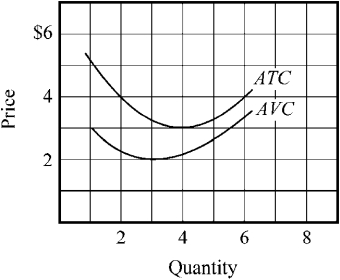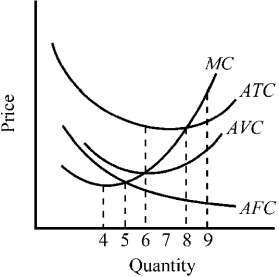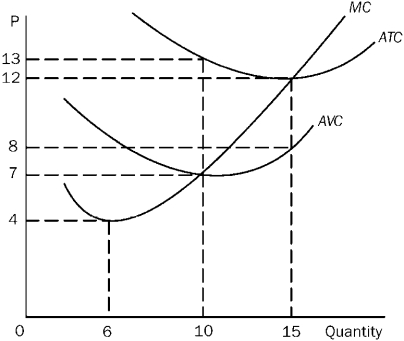A) economies of scale
B) an increase in input prices
C) an improvement in technology
D) an increase in demand for the firm's product
Correct Answer

verified
Correct Answer
verified
Multiple Choice
If General Electric finds that when it doubles both its plant size and the amount of associated inputs, its output level does not double, then
A) the law of diminishing returns is in effect.
B) long-run average costs must be decreasing.
C) the firm is experiencing diseconomies of scale.
D) the firm should increase production.
E) the firm is experiencing constant returns to scale.
Correct Answer

verified
Correct Answer
verified
Multiple Choice
The law of diminishing returns states that
A) as we continually add variable factors to a fixed amount of other resources, output eventually increases at a decreasing rate.
B) as we increase plant size, costs must diminish.
C) the additional output generated by the employment of additional units of a variable input eventually decline.
D) both a and c are correct.
Correct Answer

verified
Correct Answer
verified
Multiple Choice
Which of the following reflects diseconomies of scale?
A) Marginal product decreases as output increases.
B) Short-run marginal cost increases as output increases.
C) Long-run marginal cost increases as output increases.
D) Short-run average cost increases as output increases.
E) As output doubles, long-run total cost more than doubles.
Correct Answer

verified
Correct Answer
verified
Multiple Choice
If a firm increases its output and finds that its average total cost decreases as a result, this implies that
A) marginal cost exceeds average total cost.
B) the cost of producing an additional unit of output is more than the average total cost.
C) average fixed cost is increasing.
D) average total cost exceeds marginal cost.
Correct Answer

verified
Correct Answer
verified
Multiple Choice
Figure 8-4
 -According to Figure 8-4, at what output would a properly constructed marginal cost curve cross the ATC curve?
-According to Figure 8-4, at what output would a properly constructed marginal cost curve cross the ATC curve?
A) 2
B) 3
C) 4
D) 5
Correct Answer

verified
Correct Answer
verified
Multiple Choice
Figure 8-8
 -In Figure 8-8, which output minimizes per-unit cost?
-In Figure 8-8, which output minimizes per-unit cost?
A) 4
B) 6
C) 7
D) 8
Correct Answer

verified
Correct Answer
verified
Multiple Choice
The increase in total output that results from a unit increase in the employment of a variable input is equal to the input's
A) total product.
B) marginal product.
C) average product.
D) marginal cost.
Correct Answer

verified
Correct Answer
verified
Multiple Choice
The table below presents the schedule of total costs for Sharpie's Pencil Company.  Beyond 110,000 units, the per-unit marginal cost of producing an additional 10,000 pencils is
Beyond 110,000 units, the per-unit marginal cost of producing an additional 10,000 pencils is
A) 5 cents.
B) 5.5 cents.
C) 6 cents.
D) 7 cents.
Correct Answer

verified
Correct Answer
verified
Multiple Choice
Normal profit is a term for
A) explicit profit.
B) the competitive rate of return.
C) the accounting profit forgone.
D) pure economic profit.
Correct Answer

verified
Correct Answer
verified
Multiple Choice
If a firm produces nothing, which of the following costs will be zero?
A) total cost
B) fixed cost
C) opportunity cost
D) variable cost
Correct Answer

verified
Correct Answer
verified
Multiple Choice
If fixed cost at quantity (Q) = 100 is $130, then
A) fixed cost at Q = 0 is $0.
B) fixed cost at Q = 0 is less than $130.
C) fixed cost at Q = 200 is $260.
D) fixed cost at Q = 200 is $130.
E) it is impossible to calculate fixed costs at any other quantity.
Correct Answer

verified
Correct Answer
verified
Multiple Choice
Which of the following is not an advantage of the corporate structure over proprietorship and partnership forms of business organization?
A) Stockholders in the corporation have limited liability, whereas proprietors or partners have unlimited liability.
B) Ownership rights of a corporation may be transferred more easily.
C) Large investment funds are more easily attracted by the corporation.
D) Corporations are less likely to suffer from the principal-agent problem.
Correct Answer

verified
Correct Answer
verified
Multiple Choice
If most firms in an industry are earning a 7 percent rate of return on their assets, but your business is earning 9 percent, your rate of economic profit is
A) minus 2 percent.
B) 2 percent.
C) 9 percent.
D) 16 percent.
Correct Answer

verified
Correct Answer
verified
Multiple Choice
Whenever average total cost exceeds marginal cost,
A) average total cost is rising.
B) average total cost is falling.
C) marginal cost is rising.
D) marginal cost is falling.
Correct Answer

verified
Correct Answer
verified
Multiple Choice
Figure 8-14
The following question(s) refer(s) to the below cost curves for one very small firm in a large market.
 -Refer to Figure 8-14. If the firm produces 10 units of output, its average total cost is
-Refer to Figure 8-14. If the firm produces 10 units of output, its average total cost is
A) 6.
B) 7.
C) 12.
D) 13.
Correct Answer

verified
Correct Answer
verified
Multiple Choice
Which of the following explains most accurately why the firm's short-run marginal cost curve will eventually rise?
A) As more of the variable factor is used, its price will rise.
B) When diminishing marginal returns set in, it will take ever-larger quantities of the variable resources to produce an additional unit of output.
C) As the variable factor is used more intensely, its marginal product will rise, causing an increase in marginal costs.
D) As the size of the firm increases, the operational efficiency of the firm declines, causing an increase in marginal costs.
Correct Answer

verified
Correct Answer
verified
Multiple Choice
The upward-sloping portion of a long-run average total cost curve is the result of
A) economies of scale.
B) diseconomies of scale.
C) diminishing returns.
D) the existence of fixed resources.
Correct Answer

verified
Correct Answer
verified
Multiple Choice
Which of the following will become smaller and smaller as the firm expands output?
A) average total cost
B) average fixed cost
C) marginal cost
D) total fixed cost
Correct Answer

verified
Correct Answer
verified
Multiple Choice
The optimal plant size depends on
A) whether the firm confronts diminishing returns on its fixed factors of production.
B) the output the firm expects to produce.
C) whether the plant uses capital-intensive or labor-intensive production techniques.
D) the preferences of the individual firm owners.
Correct Answer

verified
Correct Answer
verified
Showing 121 - 140 of 223
Related Exams